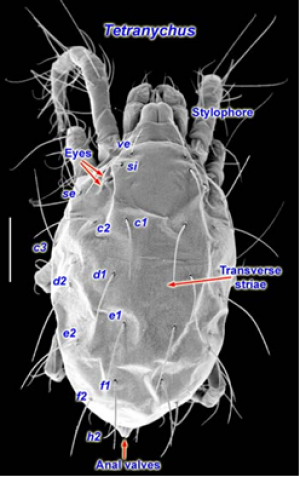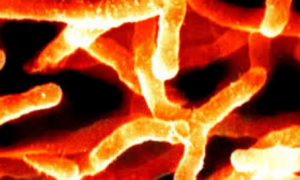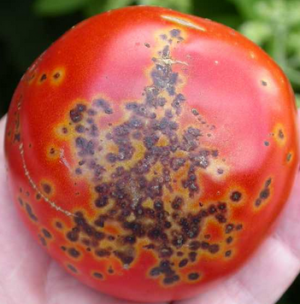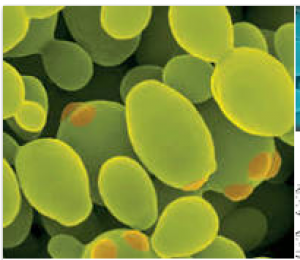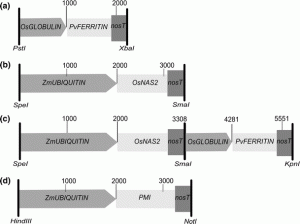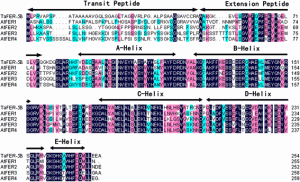The following essay is reprinted with permission from The Conversation, an online publication covering the latest research. Microelectronics has transformed our lives. Cellphones, earbuds, pacemakers, defibrillators—all these and more rely on microelectronics’ very small electronic designs and components. Microelectronics has changed the way we collect, process and transmit information.
To explore the role of protective enzymes in cassava (Manihot esculenta Crantz) resistance to mites, transgenic cassava lines overproducing copper/zinc superoxide dismutase (MeCu/ZnSOD) and catalase (MeCAT1) were used to evaluate and molecularly confirm cassava resistance to Tetranychus cinnabarinus. Laboratory evaluation demonstrated that, compared with the control cultivar TMS60444 (wild type, WT), the survival, reproduction, development and activities of SOD and CAT in T. cinnabarinus feeding on transgenic cassava lines SC2, SC4, and SC11 significantly inhibited
An increasing area of transgenic Bacillus thuringiensis (Bt) cotton is being planted in saline-alkaline soil in China. The Bt protein level in transgenic cotton plants and its control efficiency can be affected by abiotic stress, including high temperature, water deficiency and other factors. However, how soil salinity affects the expression of Bt protein, thus influencing the control efficiency of Bt cotton against the cotton bollworm (CBW) Helicoverpa armigera (Hübner) in the field, is poorly understood.
Termination efficiency of stop codons depends on the first 3′ flanking (+4) base in bacteria and eukaryotes. In both Escherichia coli and Saccharomyces cerevisiae, termination read-through is reduced in the presence of +4U; however, the molecular mechanism underlying +4U function is poorly understood. Here, we perform comparative genomics analysis on 25 bacterial species with bioinformatics approaches to examine the influence of +4U in bacterial translation termination by contrasting highly- and lowly-expressed genes (HEGs and LEGs, respectively).
In a prospective and multicentre study, children with suspected cashew nut allergy underwent a DBPCFC with cashew nut. Specific IgE to cashew nut and to the components Ana o 1, 2 and 3 were determined. A skin prick test (SPT) with cashew nut extract was performed. The association between the outcome of the food challenge test and specific IgE to Ana o 1, 2 and 3 was assessed with logistic regression analyses, unadjusted and adjusted for other diagnostic variables. Discriminative ability was quantified with a concordance index (c).
AvrHah1 [avirulence (avr) gene homologous to avrBs3 and hax2, no. 1] is a transcription activator-like (TAL) effector (TALE) in Xanthomonas gardneri that enhances water soaking in its known hosts tomato, pepper, and Nicotiana benthamiana. We observe that the water soaking conferred by AvrHah1 is due to the movement of water into the infected apoplast from a wet environment. RNA sequencing identified two basic helix–loop–helix (bHLH) transcription factors that we confirmed as targets of AvrHah1.
Initially known as the reproductive hormone, relaxin was shown to possess other therapeutically useful properties that include extracellular matrix remodeling, anti-inflammatory, anti-ischemic and angiogenic effects. All these findings make relaxin a potential drug for diverse medical applications. Its precursor, pro-relaxin, is an 18 kDa protein, that shows activity in in vitro assays. Since extraction of relaxin from animal tissues raises several issues, prokaryotes and eukaryotes were both used as expression systems for recombinant relaxin production.
Site-directed mutagenesis (SDM) has shown great progress in introducing precisely targeted mutations. Engineered CRISPR-Cas9 has received increased focus compared to other SDM techniques, since the method is easily adapted to different targets. Here, we demonstrate that transient application of CRISPR-Cas9-mediated genome editing in protoplasts of tetraploid potato (Solanum tuberosum) yielded mutations in all four alleles in a single transfection, in up to 2 % of regenerated lines.
Micronutrient deficiencies, including iron and zinc deficiencies, have negative impacts on human health globally. Iron-deficiency; anemia affects nearly two billion people worldwide and is the cause of reduced cognitive development, fatigue and overall low productivity. Similarly, zinc deficiency causes stunted growth, decreased immunity and increased risk of respiratory infections. Biofortification of staple crops is a sustainable and effective approach to reduce the burden of health problems associated with micronutrient deficiencies. Here, we developed wheat lines expressing rice NICOTIANAMINE SYNTHASE 2 (OsNAS2) and bean FERRITIN (PvFERRITIN) as single genes as well as in combination.
A novel ferritin gene, TaFER, was identified from our previous heat stress-responsive transcriptome analysis of a heat-tolerant wheat cultivar (TAM107). TaFER was mapped to chromosome 5B and named TaFER-5B. Expression pattern analysis revealed that TaFER-5B was induced by heat, polyethylene glycol (PEG), H2O2 and Fe-ethylenediaminedi(o-hydroxyphenylacetic) acid (Fe-EDDHA). To confirm the function of TaFER-5B in wheat, TaFER-5B was transformed into the wheat cultivar Jimai5265 (JM5265), and the transgenic plants exhibited enhanced thermotolerance.


 Curently online :
Curently online :
 Total visitors :
Total visitors :

